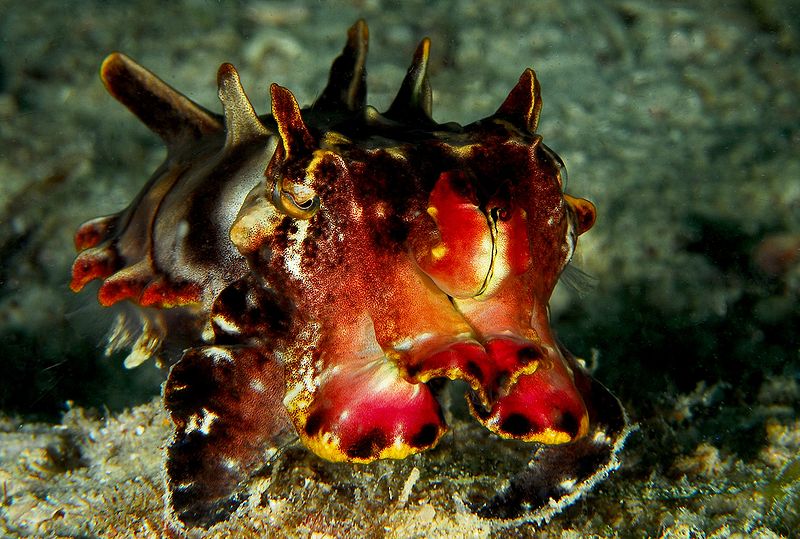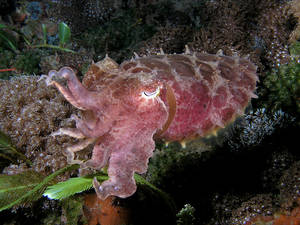Critter of the Month - Cuttlefish
Interview with
 Heather: My name is Heather Mason Jones, I'm currently an associate professor at the University of Tampa, Florida and the species that I chose was one that has actually fascinated since I was a kid and it's not seahorses, despite the fact that I worked on seahorses for my career. The group that I have actually been fascinated with forever is cuttlefish.
Heather: My name is Heather Mason Jones, I'm currently an associate professor at the University of Tampa, Florida and the species that I chose was one that has actually fascinated since I was a kid and it's not seahorses, despite the fact that I worked on seahorses for my career. The group that I have actually been fascinated with forever is cuttlefish.
Really I think I first ran across them in Jules Verne, reading excerpts of 20,000 Leagues Under the Sea. There's a chapter in there talking about the attack by the large, scary cuttlefish creature. And, I think for me as a kid reading this it was like "Oh my goodness, this is the scary, horrible organism". I could not imagine a fish doing this scary, awful thing to this big, old ship. So, from that point forward it's just something that has kind of captured my imagination and I got increasingly interested in as a kid.
And, of course really I didn't find any time observing them or interacting with them at all until an adult because they aren't found in North and South America, they are actually found other plays in the World. But, they are absent from our coast line which is actually, a relatively, unusual thing considering there's 120 species in the rest of the World. That was another part of their allure was that there was this fantastic creature that was common elsewhere and yet wasn't found on the coastline that I grew in.
Cuttlefish have a very unusual way of being. They've got this elaborate camouflage mechanism that allows them to not just match the colour of their background with their chromataphores, they also have the ability to change the texture of their skin to make it look either smooth or to have it look like its got little tufts of algae off of the surface of it. Walking up to a fish tank you're actually looking at it thinking you're seeing a bunch of rocks on the bottom and actually realizing that these are organisms that are matching the background completely.
And, then spending time trying to get them to interact with you, you can actually  use your fingers on the front of the tank to pretend to have the tentacles of the cuttlefish and encourage the cuttlefish on the other side of the glass to react to you as if you were an aggressor. And, so when you do that these rocks change to these elaborately coloured, striped, spotted organisms that are no longer cryptic.
use your fingers on the front of the tank to pretend to have the tentacles of the cuttlefish and encourage the cuttlefish on the other side of the glass to react to you as if you were an aggressor. And, so when you do that these rocks change to these elaborately coloured, striped, spotted organisms that are no longer cryptic.
They are incredibly obvious in the tank and you can actually see the waves of colour moving along the sides of their bodies and it looks like there is just all of this emotion running over the surface of this organism because you can see these waves of reddish colouration and other kinds of colours across their surface and watch them interact with you across the glass. And also interact with each other; they have an elaborate mate choice mechanisms. Males compete for access to females and have these bright colourations that they use to engage with the females. And so they are very interesting and unique species that has this very cryptic lifespan that also has this kind of very elaborate and very showy colouration as well.
Find out more:
Heather Mason Jones, University of Tampa.
BBC Nature, facts and videos on the Australian giant cuttlefish










Comments
Add a comment